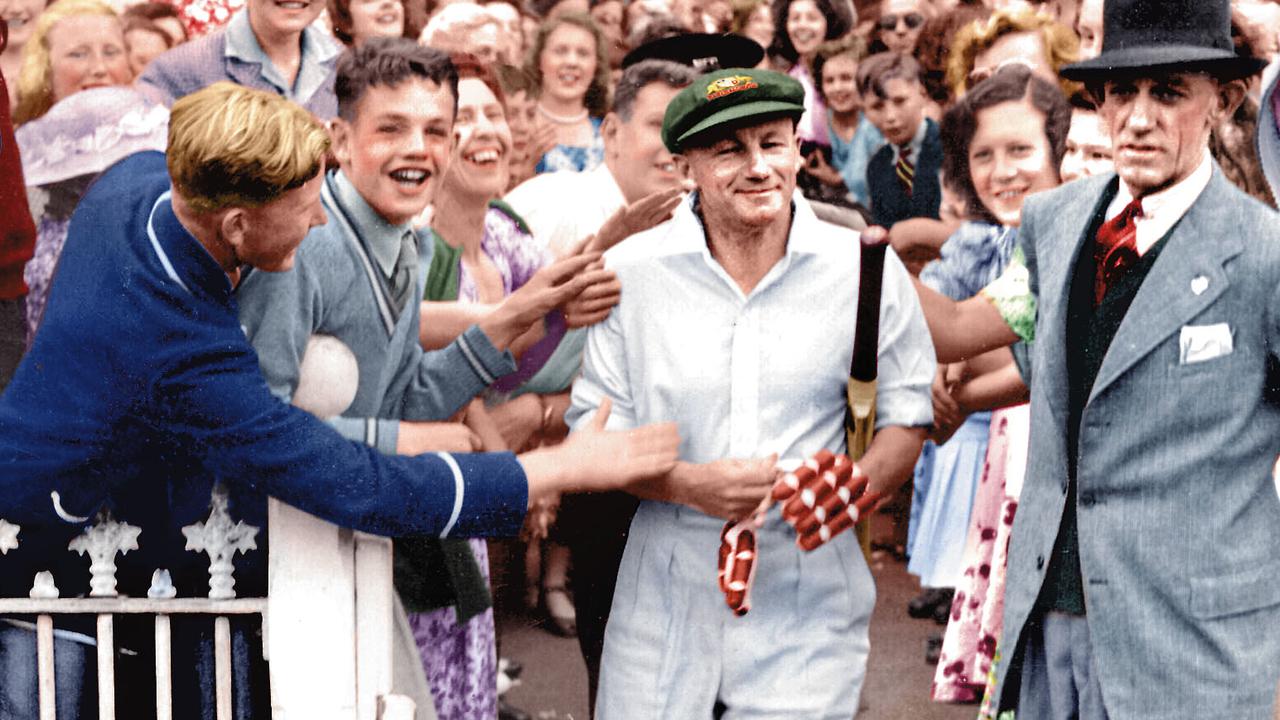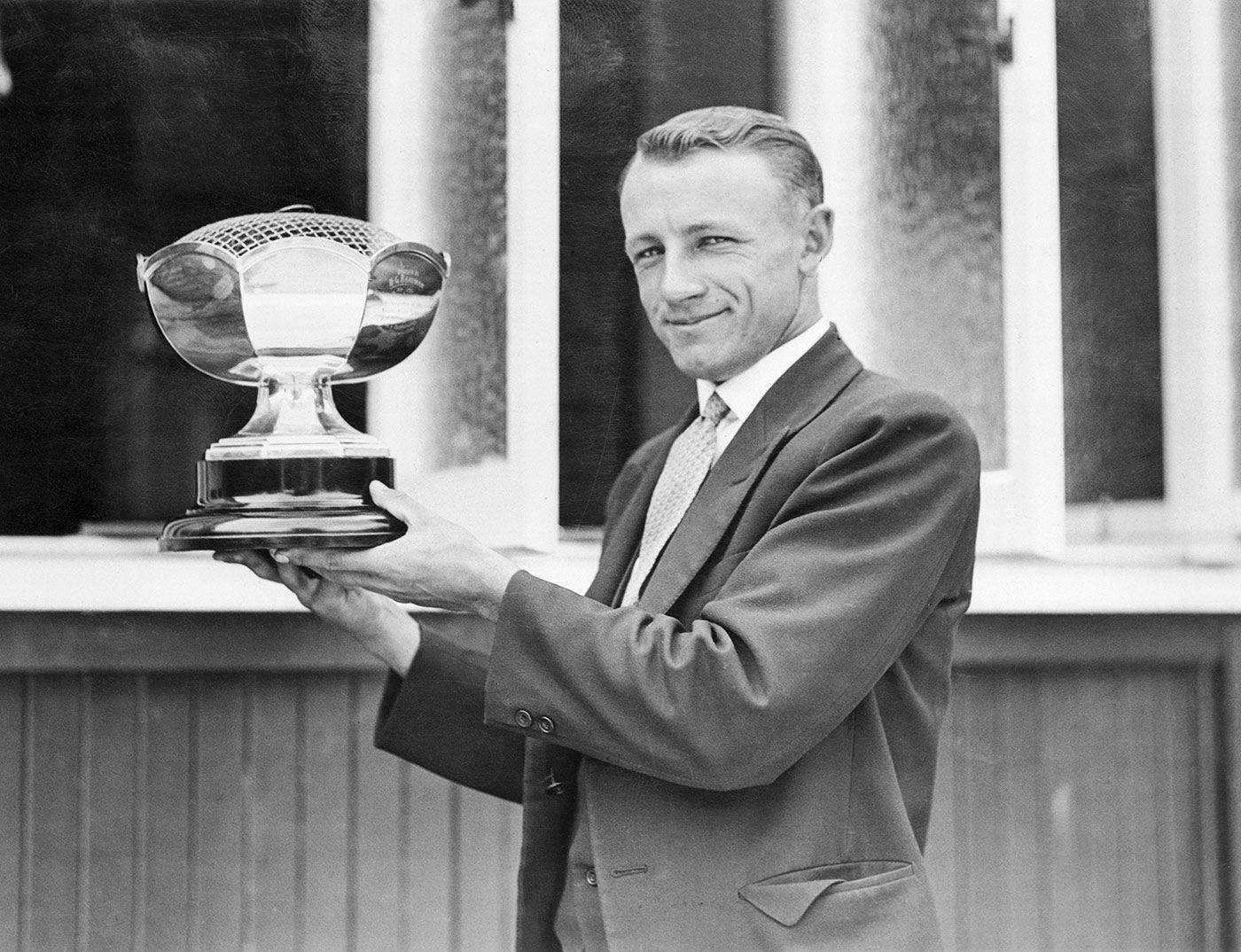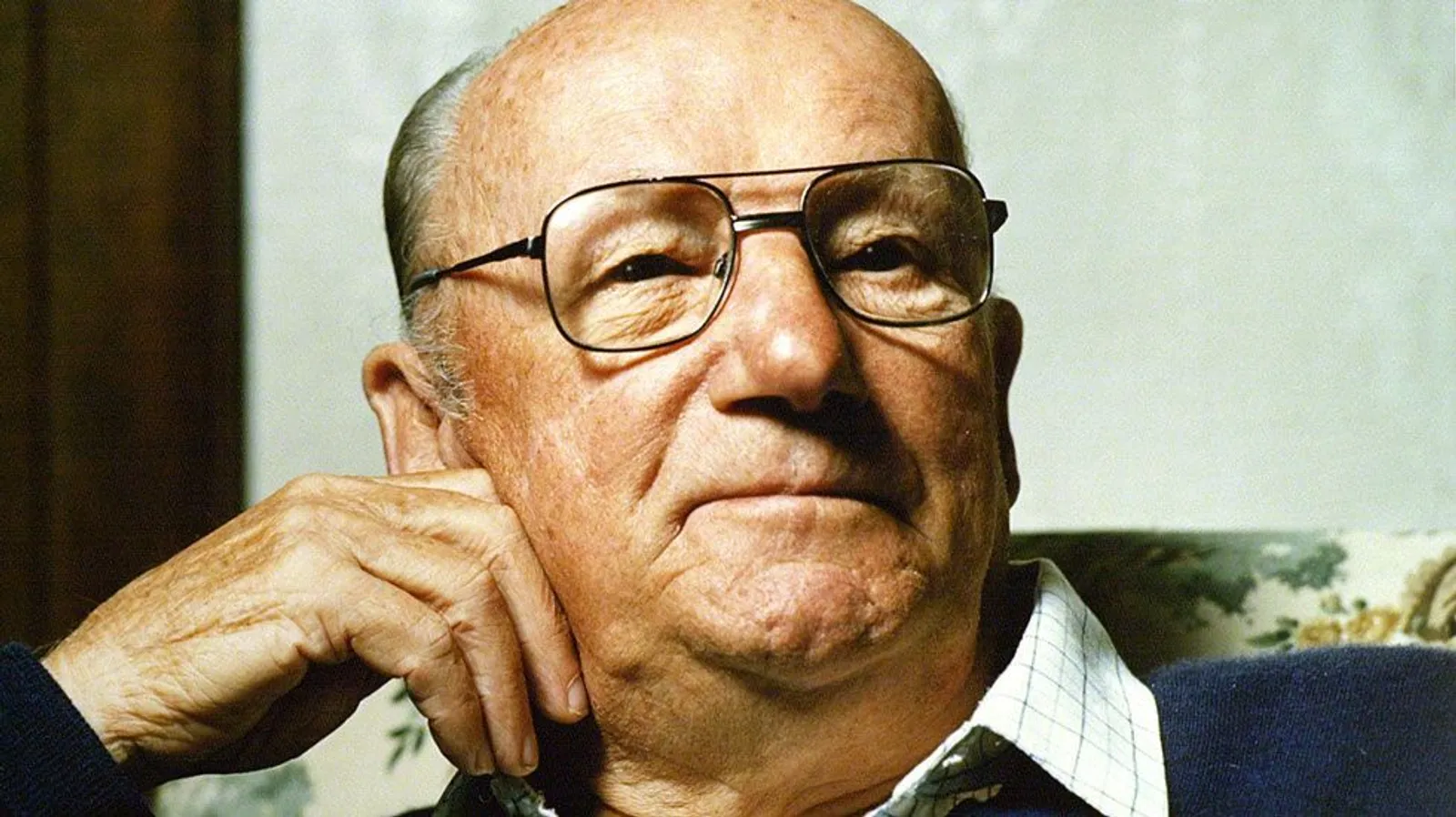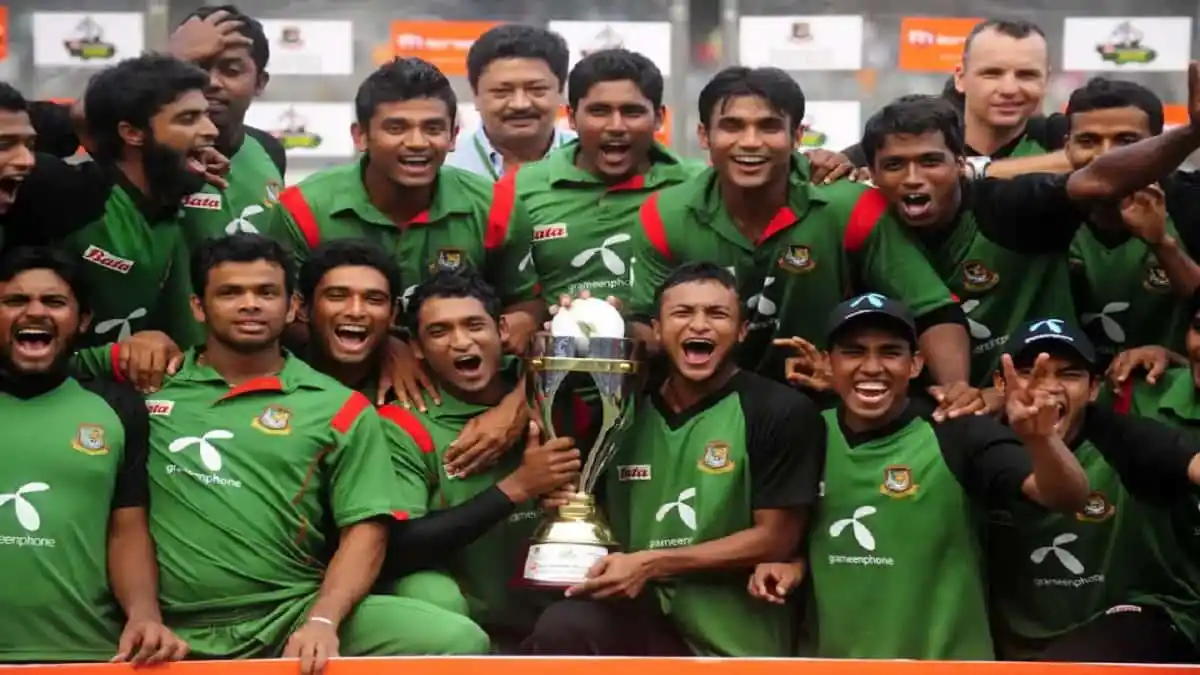Acknowledged as ‘the greatest batsman’ – Sir Donald Bradman brought much to cricket. Here is a breakdown of Bradman’s records, statistical analysis, and his remarkable career.
Summary and Key Takeaways
Key Takeaways of Sir Donald Bradman's Biography, Career, and Statistics
Early Life and Biography of Sir Donald Bradman
- Birthplace and Family Background:
- Born on August 27, 1908, in Cootamundra, Australia, Bradman grew up in Bowral, New South Wales.
- He had a typical rural upbringing and showed early talent in cricket.
- Early Education:
- Educated at Bowral Public School, Bradman's focus shifted to cricket, where he showed exceptional skill.
- Initial Involvement in Cricket:
- Began playing cricket at a young age and quickly gained recognition for his talent and dedication.
- Significant Childhood Influences:
- Received support from his family, especially his uncle George Whatman, and developed a disciplined practice routine.
- Early Cricketing Experiences:
- Played for Bowral's senior cricket team at 12, displaying talent beyond his years.
- Challenges:
- Faced financial constraints but overcame them with determination and innovative practice methods.
Career Achievements of Sir Donald Bradman
- International Debut and Early Career:
- Made Test debut in 1928 and established himself as a formidable batsman.
- Significant Milestones and Records:
- Holds the highest Test batting average of 99.94 and scored 974 runs in the 1930 Ashes series.
- Recorded 12 double centuries and set the record for the most runs scored in a day of Test cricket.
- Domestic Cricket Achievements:
- Achieved remarkable feats in first-class cricket, including the highest score of 452 not out.
- Awards and Recognitions:
- Knighted for services to cricket, inducted into multiple cricket Halls of Fame.
- Impact on Teams and Legacy:
- Transformed Australian cricket, led the team to victories, and left an enduring legacy.
Statistical Analysis of Sir Donald Bradman's Cricketing Career
- Test Cricket Performance:
- Holds unparalleled records with a Test average of 99.94, 6,996 runs, and 29 centuries.
- First-Class Cricket Performance:
- Averaged 95.14 with 28,067 runs and 117 centuries.
- One Day Internationals (ODIs) and Twenty20 (T20s):
- Did not play ODIs or T20s as they were introduced after his career.
- Bowling Statistics:
- Took 36 wickets in first-class cricket.
- Role and Position in the Team:
- Batted predominantly at number 3 and was a cornerstone of the team's batting lineup.
- Batting Techniques:
- Known for his unique grip, high elbow, and ability to play all types of bowling effectively.
Final Words
- Legacy:
- Bradman's legacy is unmatched, with a career defined by dominance, consistency, and technical proficiency.
- Despite never playing modern formats, his impact on cricket transcends generations, making him one of the greatest sportsmen in history.
Early Life and Biography of Sir Donald Bradman

Sir Donald Bradman, often referred to as “The Don,” was born on August 27, 1908, in Cootamundra, New South Wales, Australia.
He was the youngest son in a family of five children. His parents, George and Emily Bradman, moved the family to Bowral, New South Wales, when Donald was still an infant.
Growing up in a modest household, Bradman had a typical rural upbringing, which included chores and participation in family activities.
Early Education
Bradman’s formal education occurred at Bowral Public School. His academic performance was solid, but it was on the playground where he truly excelled, showing a natural aptitude for sports, particularly cricket.
His early exposure to cricket was less through structured play and more through impromptu games using a cricket stump and a golf ball, which helped him develop his trademark precision and timing.
Initial Involvement in Cricket
Bradman’s serious involvement with cricket began at a young age. He would practice for hours on end, hitting a golf ball against the wall of his family’s water tank with a cricket stump.
This unconventional method of practice would lay the foundation for his legendary batting technique.
By the age of 12, Bradman had already started playing for Bowral’s senior cricket team, showcasing his burgeoning talent against much older players.
His performances in these early games quickly marked him as a prodigious talent, capable of playing well beyond his years.
Significant Childhood Influences
Bradman’s childhood was pivotal in shaping his cricket career. The support from his family, particularly his uncle George Whatman, was crucial.
Whatman was a former cricketer himself and recognized Donald’s potential early on, providing him with guidance and opportunities to play in local teams and competitions.
Additionally, Bradman’s self-driven practice routine and his innovative use of a golf ball and cricket stump were significant in developing his unique batting style.
These early experiences instilled in him a discipline and focus that would define his approach to the game.
Early Cricketing Experiences
Sir Donald Bradman’s early cricketing experiences were marked by rapid advancement and a wide recognition.
His exceptional skill level led to him representing Bowral in the Berrima District competition, where he compiled numerous high scores, often outshining much more experienced players.
One of his most notable early achievements was when he scored 234 runs in a school match, a feat that garnered attention from the local and regional cricketing community.
This performance was a clear indication of his extraordinary talent and his potential for future success in the sport.
Challenges
Despite his evident talent, Bradman faced challenges, including financial constraints and limited access to professional coaching and facilities.
His family was not wealthy, and opportunities for professional development in a small town like Bowral were scarce.
However, Bradman’s determination and passion for the game drove him to make the most of his circumstances, using innovative methods to practice and improve his skills.
Career Achievements of Sir Donald Bradman

Sir Donald Bradman made his Test debut for Australia in November 1928 against England at the Brisbane Cricket Ground.
Despite a modest start to his international career, he quickly established himself as a formidable batsman, scoring his maiden Test century in the third match of the series.
Significant Milestones and Records
1. Test Batting Average
Bradman’s most celebrated achievement is his Test batting average of 99.94, a statistic often cited as the greatest achievement by any sportsman in a major sport.
2. England Tour 1930
One of his most remarkable series was the 1930 tour of England, where he scored 974 runs in the Ashes series, still the most runs scored by a batsman in a single Test series.
3. Double Centuries
Bradman holds the record for the most double centuries in Test cricket, amassing 12 over his career.
4. Fastest Scorer
He was known for his ability to score quickly and amassed 309 runs in one day during the 1930 Test match at Headingley, a record for the most runs scored in a single day of Test cricket.
Domestic Cricket Achievements
In domestic cricket, Bradman represented New South Wales and South Australia, achieving remarkable feats:
1. Highest First-Class Score
He scored 452 not out for New South Wales against Queensland in 1930, which was then a record for the highest score in first-class cricket.
2. Sheffield Shield
Bradman’s performances in the Sheffield Shield, Australia’s premier domestic competition, were pivotal, leading his teams to multiple championships.
Awards and Recognitions
1. Knight Bachelor
In 1949, Bradman was knighted for his services to cricket, becoming the first Australian cricketer to receive a knighthood.
2. Australian Hall of Fame
He was an inaugural inductee into the Australian Cricket Hall of Fame in 1996.
3. ICC Cricket Hall of Fame
Bradman was posthumously inducted into the ICC Cricket Hall of Fame in 2009.
Impact on Teams and Legacy
Bradman’s impact on cricket is profound, with his performances significantly influencing the outcome of many series and tournaments.
His ability to score runs consistently and at a fast rate made him a game-changer for the Australian cricket team.
His leadership as captain of the Australian team also led to many victories and helped establish Australia as a dominant force in international cricket during his era.
Statistical Analysis of Sir Donald Bradman’s Cricketing Career
The statistical analysis of Sir Donald Bradman’s cricketing career provides a comprehensive view of his performance.
By analyzing numerical data and trends from his matches, this section will provide insights into his consistency, and dominance.
Test Cricket Performance
Bradman’s Test batting average stands at an unparalleled 99.94, the highest in the history of Test cricket. This average was maintained over 52 Test matches and 80 innings.
He scored a total of 6,996 runs in Test cricket. Meanwhile, his highest score in Test cricket is 334, made against England at Headingley in 1930. Bradman scored 29 centuries and 13 half-centuries in his Test career.
First-Class Cricket Performance
In first-class cricket, Bradman’s average was 95.14, amassing 28,067 runs in 234 matches. His first-class cricket career included 117 centuries and 69 half-centuries. Bradman’s highest first-class score was 452 not out for New South Wales against Queensland.
One Day Internationals (ODIs) and Twenty20 (T20s)
Sir Donald Bradman never played in ODI or T20 formats as these formats were introduced after his playing career had ended.
Bowling Statistics
While primarily known for his batting, Bradman occasionally bowled in first-class cricket, taking 36 wickets at an average of 37.97.
Role and Position in the Team
Bradman predominantly batted at number 3 in the batting order, a position that allowed him to stabilize the innings early and dominate the opposition bowling attack.
His role was primarily as a batsman, and he was often the cornerstone around which the team’s innings were built.
Batting Techniques
1. Grip and Stance
Bradman’s technique was distinctive, with a high elbow, excellent footwork, and a unique grip that saw the bat rest in the palm of his hand rather than the fingers.
2. Playing Style
He was known for his ability to play all types of bowling effectively, utilizing a mix of defensive and attacking shots. His use of the pull, hook, and cut shots against short-pitched deliveries was particularly effective.
3. Practice Method
Bradman famously practiced with a cricket stump and a golf ball, which helped him develop exceptional hand-eye coordination and adaptability to various types of bowling.
Final Words of Sir Donald Bradman’s Biography, Career, and Statistics

Sir Donald Bradman’s legacy in the world of cricket is unparalleled, marked by a career that set new heights in batting excellence.
His astonishing average of 99.94 in Test cricket, coupled with his prolific run-scoring in first-class matches, underscores a career defined by dominance and consistency.
Bradman’s technical proficiency, characterized by his unique batting stance and innovative practice methods, revolutionized the sport and set standards that aspiring cricketers still aim to reach.
While he never played in the modern formats of ODI and T20 cricket, his impact on the game transcends formats and generations, cementing his status as one of the greatest sportsmen in history.
All You Need to Know about Sir Donald Bradman
Did Bradman ever hit a six?
No, Sir Donald Bradman did not hit many sixes in his professional cricket career. Records show he hit only 6 sixes in his entire Test career (52 matches) and no sixes in his first-class matches (234 matches). His batting style focused on accumulating runs efficiently and playing with minimal risk.
Who is better, Sachin or Bradman?
Comparing Bradman and Tendulkar is a complex topic with passionate arguments on both sides. Here’s a breakdown to consider:
- Era: Bradman dominated in the 1930s, while Tendulkar played from the late 1980s to 2013. Cricket equipment and playing conditions have evolved significantly, making direct comparisons challenging.
- Statistics: Bradman holds the record for the highest Test batting average (99.94), a nearly untouchable feat. Tendulkar has the most runs scored in both Tests and ODIs.
- Impact: Both players revolutionized batting and inspired generations of cricketers.
Ultimately, who you consider “better” depends on the criteria used and personal preferences.
What record is Sir Donald Bradman best known for?
Sir Donald Bradman is best known for his phenomenal Test batting average of 99.94, an almost unbelievable achievement that stands as the highest in the history of Test cricket. This record showcases his exceptional consistency and dominance as a batsman.
Did Tendulkar meet Bradman?
Sachin Tendulkar did not meet Sir Donald Bradman. Bradman passed away in 2001, and Tendulkar continued his cricketing career until 2013.
Did Bradman play in India?
Yes, Sir Donald Bradman did play in India. He toured India with the Australian team in 1936-37, playing in several matches across different cities.




























